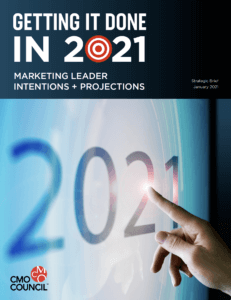Is your brand resilient?
March 9, 2021

Doing the hard work of figuring out your brand and brand promise is just the beginning of the journey. When we work with a client to develop their brand, we warn them that their real work has begun once they make those initial decisions. Breathing meaning into a brand is a lifelong effort.
If you don’t truly ground your brand in a solid foundation and let it take root, then it becomes a marketing tagline or campaign that fades from the consumer’s consciousness in a nanosecond. On the flip side, when a brand is more than just a catchphrase and actually influences the company’s most significant decisions, it can be one of the greatest differentiators possible.
Because your brand (not your logo) should be evergreen, it’s vital that you make sure your brand is resilient enough to stand the test of time. Here are some traits of a brand that is built to last.
Based on reality: It should go without saying that when you develop your brand, it needs to be truthful. It needs to reflect who the organization is. It’s a promise, and it’s pretty tough to keep an inauthentic promise. Sure, you can fake it for a brief time, but it’s impossible to sustain. Remember that the consumer is jaded and is looking for evidence that it’s just for show. The only way to earn their trust is by living out your brand with 110% consistency. No one is that good of a faker.
Values-based: Every organization has foundational values, whether they’re identified and expressed or not. They often are the same values as the founder, but that doesn’t mean they’re woven through the entire company. A strong brand honors and elevates the values and bases many of the company’s policies and procedures on them.
Built with the customer in mind: A brand understands who they serve and how they add value to that customer. The more enthusiastic and committed the brand is, the more enthusiastic its customers are in return. This mutual loyalty is an incredible financial advantage to a business, and a strong brand helps cultivate that love fest.
Adaptable: If a brand is meant to be evergreen, it means the brand has to be adaptable. Survival requires the ability to shift as culture and realities evolve over time. When you think about any long-lasting brand, they look, behave and serve differently than they did at the moment of their origin. They’ve remained relevant by adapting to the changing times.
As true internally as externally: No strong brand can be two-faced. Remember that a brand promise is kept or violated by the employees of the brand. It’s pretty unrealistic to expect people to perpetuate a lie, which is how it will feel if the brand values aren’t honored internally. If you think your consumers are skeptical, your employees are even more so. Unless they’re fresh out of school, they’ve probably worked for a company that professed to be something to the outside world but showed up very differently to them. You have to earn their trust before they’ll help you earn your consumers’ trust.
A genuine brand that guides your organization, attracts right-fit customers to you, reassures your current clients that you’re the right choice, and allows you to gain market share is a powerful asset. Most of us are not running companies the size of Coca-Cola, but it is worth noting that their brand is valued at $84 billion.
There’s no reason your brand, if it’s built to be resilient, can’t deliver an incredible value to your organization as well. You just need to build and nurture it wisely.
This was originally published in the Des Moines Business Record, as one of Drew’s weekly columns.
More




 There’s some good news and optimism from global marketing leaders looking for growth recovery in 2021. Nearly two-thirds of those surveyed by the CMO Council say they will boost marketing spend in the coming year and most don’t expect to downsize or re-structure their organizations.
There’s some good news and optimism from global marketing leaders looking for growth recovery in 2021. Nearly two-thirds of those surveyed by the CMO Council say they will boost marketing spend in the coming year and most don’t expect to downsize or re-structure their organizations.


